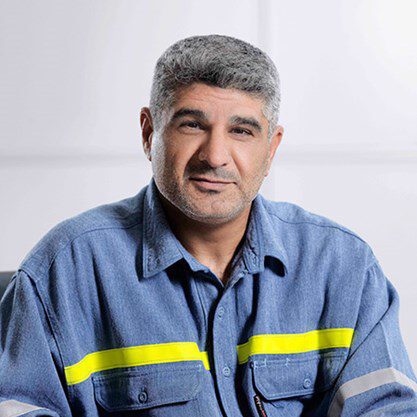Aluminium has a pivotal role to play in accelerating the road to a net zero future.
It is crucial to many technologies driving the energy transition, helping planes, trains, and automobiles transport people more efficiently, bringing reliable energy to growing communities, building green cities, and preserving nutritional and pharmaceutical resources.
Reducing emissions
However, work still needs to be done to reduce the environmental impact of aluminium production.
According to the International Aluminium Institute (IAI), in 2022, the entire life-cycle of the aluminium industry was responsible for 1.122 billion tonnes of CO2 emissions. However, while aluminium production is growing, the total direct greenhouse gases from its production are steadily falling, primarily because of new technologies.
Today, the sector’s direct greenhouse gas emissions occur predominantly in primary production during the reduction process through electrolysis. In 2022, this accounted for 789 million tonnes of CO2 emissions. Encouraging, this is down from 834 million in 2019.
Sustainability commitments
Aluminium is used in an enormous variety of products and systems that reduce carbon emissions. These include efficient cabling, turbines, solar panels, consumer durables, intelligent control systems in energy supply networks, lightweight vehicles, smart buildings, and packaging that preserves agricultural outputs.
However, this doesn’t mean the aluminium sector is standing still. Instead, the IAI continues to ensure that the industry is at the forefront of progress towards a net zero future.
In 2021 the IAI published the Aluminium Sector Greenhouse Gas Pathways to 2050 report, which sets out technology pathways to emission reductions, in line with the Paris Agreement goals. At COP28, the IAI launched the Aluminium Industry GHG Initiative, which commits to transparently and publicly tracking all its member companies’ ambitions and progress in greenhouse gas reduction. The IAI is also a founding member of the Industrial Transition Accelerator, which focuses on developing and deploying a wide range of technologies to cut emissions at scale, including green hydrogen, long-duration energy storage, and carbon capture, usage, and storage.
There is a long way to go, but the aluminium industry will continue to steer the discourse towards a sustainable future.

Vice President Smelter Operations
Emirates Global Aluminium – Jebel Ali
“Driven by a quest for continuous improvement and ongoing innovation, over the past 25 years DUBAL has developed advanced reduction cell technologies that not only increase productivity but also reduce our operations’ impact on the environment through improved energy efficiency and reduced emissions.”